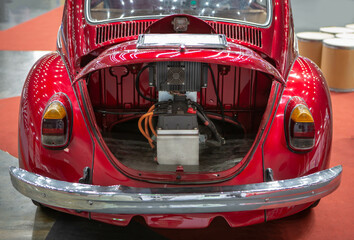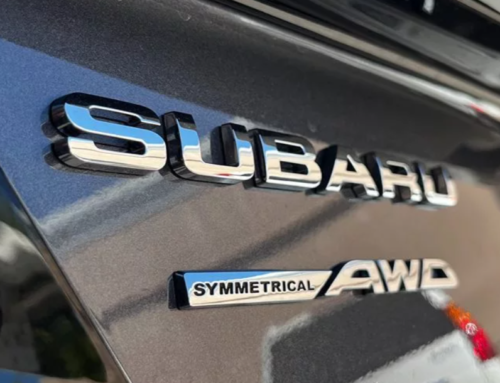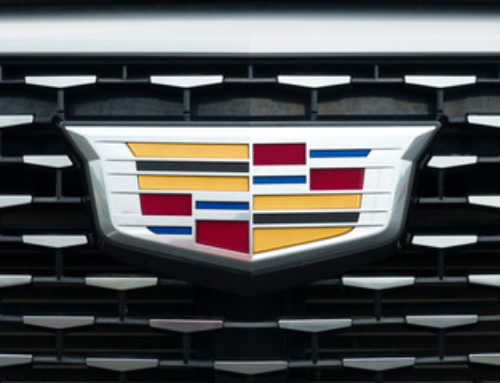What if you have an old car that you just can’t justify getting rid of but would like to convert to electric, well it may be able to be done! Check this out!

Have you been thinking about going electric? Besides the zero-emission benefit, electric vehicles are cheaper to service than gasoline vehicles. Not to mention, electricity is less expensive than gasoline in most places.
The conundrum is that most people own a gasoline vehicle and it could be a while before they’re ready to replace it. But what if you could convert your gasoline vehicle into an electric vehicle? Does it make sense, or would you be better off buying a new electric vehicle? Let’s find out.
What would be the best type of vehicle to be converted to electric?
It’s possible to convert a gasoline vehicle to an electric vehicle, but first, you have to consider a few things; battery storage space, weight, chassis, transmission, and the type of vehicle. You should also make sure you actually want to use an electric vehicle before moving forward.
The best vehicles to convert should have adequate storage space for the batteries, especially under the seats or in the trunk. Don’t forget to estimate how many batteries you will need before you start.
The weight of your vehicle is also an important factor because it affects energy efficiency. More succinctly, a lightweight vehicle doesn’t consume as much power compared to heavyweight vehicles. Not to mention, you will have a longer range with a lightweight electric vehicle.
Since the batteries will add more weight to your vehicle, you should avoid converting vehicles with chassis problems. In addition to that, you should keep off vehicles with too much rust or broken parts, although you can easily convert a vehicle with no engine.
Last but not least, manual vehicles are better to convert than automatic transmission vehicles. This is because manual engines are less complex and lighter than automatic transmissions.
According to Torque Trends, some of the most popular gasoline vehicles to convert include the Ford F-150, Ford Mustang, Chevrolet Camaro, Nissan Hardbody, Chevrolet Colorado, Chevrolet Corvette, and any Toyota pickup. Now, here are several DIY electric vehicles you can build in your garage, but they might not be exactly what you’re thinking of when it comes to an EV conversion.

Here’s the breakdown of the process!
Before you start the conversion process, you should find an ICE to EV conversion kit built for your specific vehicle model, which will make it easier to work on your vehicle. Next, you should remove anything that won’t be necessary after you’re done with the conversion—this includes the engine, gas tank, exhaust, radiator, and fuel lines.
Once those components are out of the way, you can start the conversion process.
Install the Electric Motor
Connect the electric motor to the transmission and install it in the engine compartment. To secure the electric motor to the transmission, you will need an adapter plate. Also, you may need to weld a metal frame in the engine compartment to hold the electric motor in place.
However, the transmission attached to the electric motor should be electronically-controlled. If your vehicle doesn’t have one, you can replace it.
Install the Controller
Since an electric vehicle doesn’t need a carburetor, you will need a controller to regulate the speed and acceleration. Follow the instructions in your conversion kit’s manual to install the controller. The installation process depends on whether the controller is water-cooled or air-cooled.
Mount the Batteries
Find the ideal space to install the batteries; it could be in the trunk, under the seats, the engine compartment, or the gas tank space. For the type of batteries, you can choose golf-cart batteries, marine deep cycle batteries, or lithium-ion batteries. Of course, when you’re installing the batteries, make sure they’re properly mounted and balanced to help minimize vibration frequency on the road.
Wire the Electrical System
Wire the motor and batteries to the controller. Also, you need to reconnect your vehicle’s radio, lighting, and other electrical systems back to their original state. If you want to power the air conditioner, you can wire the electric motor to the AC compressor. Similarly, if you want to warm up the interior of your electric vehicle, you can install an electric water heater.
Replace the Brakes and Hydraulic Power Steering
Since most gasoline vehicles are equipped with hydraulic power steering, you need to replace it with an electric hydraulic pump after the conversion. Besides that, it would be a good idea to install a regenerative braking system that makes it possible to recycle energy back to the battery.
Install the Charging System and Volt Meter
There is just one more step; install a convenient charging port in your vehicle. The ideal spot for the charging port should be on the fuel tank door or the hood. If you want to monitor the charge percentage of your battery, you can install a voltmeter.






